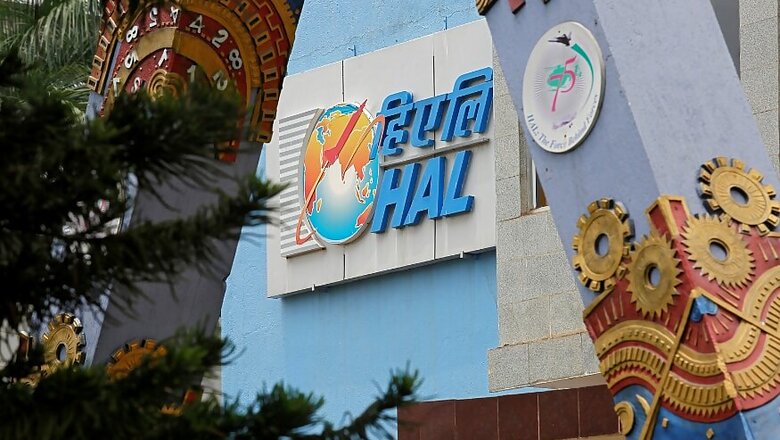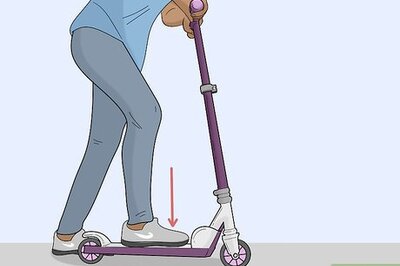
views
The recent crash of our frontline fighter, the state-of-the-art Mirage 2000 has deeply saddened me. Loss of two precious lives of our brilliant young test pilots has left me totally shocked. Mirage 2000 is one of the best fighter aircraft in the combat fleet of the Indian Air Force.
During my tenure at Hindustan Aeronautics Limited (HAL), I have had the valuable experience of working practically on all combat aircraft operated by the IAF and I have always admired the Mirage 2000 for its great design, excellent build quality and Maintenance Repair and Overhaul (MRO) technologies.
Mirage 2000 played a significant role in helping us win the Kargil war. HAL Bangalore contributed significantly in the configuration of the systems on the aircraft for these operations. We at HAL have always felt very proud of our contribution. We maintained a very high level of fleet serviceability.
We had greatly cut down the cycle time of its MRO and maintained a minimum inventory for its overhaul.
We proved our competency in MRO of Mirage 2000 so efficiently that it convinced Dassault Aviation to authorise us to undertake the MRO of Mirage 2000 operated by other friendly countries. HAL Bangalore also had the privilege of exporting specified range of ground handling equipment of Mirage 2000 to Dassault Aviation.
In recent times, unfortunate accidents and crashes have raised serious concerns and doubts over the quality, reliability and competency of indigenously produced and overhauled aircraft. These issues have to be addressed very seriously.
Based on professional experience of more than three decades in the areas of manufacturing fighter aircraft, upgradation of aircraft, aero-engines and systems etc., combined with my exposure to overseas aerospace industry in Russia, UK, France, US, and Israel, I can say with full confidence and authority at my command that skills and facilities we have in India are at par with the best in business.
The HAL ranks 38th in the global ranking of top 100 aerospace companies. This achievement has only been possible with the total involvement of government regulators, Directorate General of Aeronautical Quality Assurance (DGAQA), Centre for Military Airworthiness & Certification (CEMILAC), and above all the Indian Air Force.
Quality control and assurance are managed at various stages of manufacturing, upgradation, MRO etc., by HAL and government regulators. Final approval of the aircraft, aeroengines and systems is given by the government regulators.
Aircraft are tested by HAL pilots and customer pilots before being handed over to defence forces. These systems have been in place for the last several years. They are time-tested and proven. India is one of the few counties in the world having such capabilities. This generates huge amount of self-confidence in our goal to become self-reliant in defence sector.
If some gaps have occurred that are affecting the quality and reliability of aviation products, the government of India may consider constituting a high-level committee of all stakeholders to look into details, the systems, procedures, skills, infrastructure involved and recommend appropriate measures to be taken to ensure the highest levels of quality and reliability.
I, as a professional with experience of more than 37 years in aerospace industry, understand what it has taken to develop the know-how in this sector within the country and to bring HAL to a global stage from next to nothing in the last 75 years.
Some vested interests and external forces may like to see this industry weakened and demoralised by their sustained criticism. We, as a nation, should make every possible positive effort to fill the gaps and improve our aerospace sector.
On a parting note, one wish I had while working on Mirage 2000 was that instead of only going for its outright purchase, we should begin locally manufacturing the aircraft.
France had given an option to India for the licensed production of Mirages. This option was to be exercised by India within a specified time-frame. However, this option was never exercised by India. I wish this option was considered. It was one of the most advanced aircraft of the time.
Had we exercised this option, we could have gone in for production of its next advanced version mirage 2000-5, in the subsequent years as a follow-on project. This would have been our Medium Multi-Role Combat Aircraft (MMRCA) which we were trying to get hold of since late 90s.
Producing these aircraft locally would have managed to keep our Air Force fleet’s strength to authorised levels, when MiG 21s were retiring and Light Combat Aircraft (LCA) project was lagging behind in its development. This would have avoided the present crisis of depleting squadron strength.
(The writer is a former Managing Director at HAL. Views expressed are personal)




















Comments
0 comment